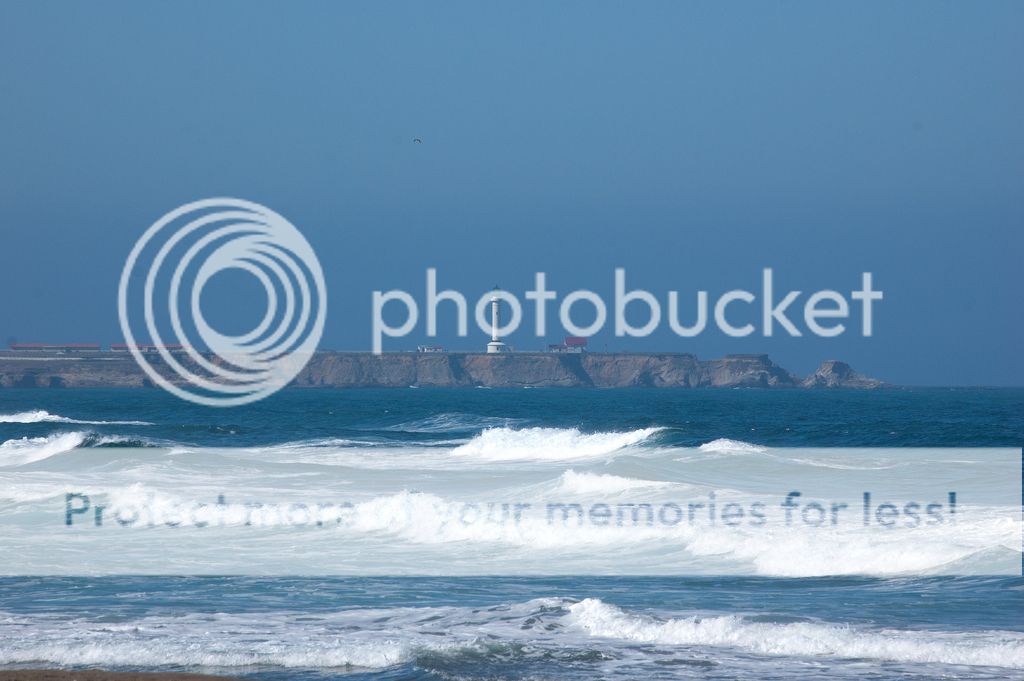In the entire United States, we have 14 special areas of the ocean and the Great Lakes that we’ve deemed necessary to protect. California alone is home to four of these National Marine Sanctuaries, with our stretch of Pacific ocean containing some of the most productive and diverse ecosystems of any coastline in the world. Cordell Bank, the Gulf of the Farallones, and Monterey Bay NMS protect these amazing ecosystems and ensure that they will continue to thrive, providing our coastal communities with jobs in fisheries and ecotourism.

Image courtesy of Flickr user Iris
Now we are in the process of expanding the borders of Cordell Bank and the Gulf of the Farallones with a proposal that would more than double their size if the plan is approved. The proposed sanctuary expansion was initiated by public interest to prevent oil and gas exploration along the north coast, but the plan has been met with resistance from people concerned about commercial and recreational fishing restrictions. In actuality, the boundary expansion would ensure that these extremely productive coastal waters would be protected from harmful human activities, making it beneficial for local fisheries. These protected areas have a trickle-down effect for consumers, allowing them to keep their favorite local seafood items in stock at local markets and restaurants.
The proposed boundary expansion
The two sister sanctuaries encompass 1,808 miles at the moment, while the proposed expansion would increase their combined boundaries by 2,775 square miles. This is a tremendous amount of protected area that would help continue the fostering of healthy marine life and thriving coastal communities.
So what exactly would this expansion mean? A National Marine Sanctuary mainly protects against oil and gas exploration. A protected piece of ocean would not allow fracking, an extremely ecologically harmful process which involves drilling and injecting fluid into the ground at high pressure in order to fracture the substrate, releasing gas and oil deposits. Fracking uses detrimental chemicals that can kill marine life, not to the mention the brutal physical force that destroys marine habitats. It is not something that we want to happen along our coastline, where we rely on our oceans for fishing and ecotourism.
This expansion would also keep oil platforms from popping up along our coastline. Oil rigs are a serious threat to marine ecosystems and our coastal cities – as the horrendous Deepwater Horizon spill in the Gulf of Mexico in 2010 demonstrated. A spill from an oil platform would be devastating for our coastline, a risk we simply can’t take.
Our coastline is far too precious not to protect from such awful human activities. We’ve already recognized how vital a healthy ocean is for us. In addition to the National Marine Sanctuaries, we’ve established an extensive network of Marine Protected Areas (MPAs) that work to protect specific ecosystems and populations. If we were to start fracking and building oil platforms along the Northern California coastline, we would be throwing away all of our efforts to keep these areas safe and thriving.
The counter argument
Our stretch of coastline up to Point Arena is extremely nutrient dense and supports ocean life and numerous fisheries that keep eco-friendly San Francisco stocked with amazing local seafood items. Dungeness crab, herring, sardines, and salmon are just a few examples. This is where the concept become murky for some people – since this is such a rich area for fishing, many fishermen and other people in the seafood industry are concerned that our coastal communities will lose out on commercial and recreational fishing. A “protected” area immediately incites the notion that all fishing will be restricted. In this case, this train of thought is simply not true and in reality is the exact opposite.
Fishing can (and does) take place inside of a National Marine Sanctuary. MPAs are the areas where fishing is restricted – and yes, many of these are definitely found within NMSs. But as long as a fishing vessel has an MPA map and a GPS device, they can limit their fishing to the areas outside of MPAs. A National Marine Sanctuary (and MPAs) in the long run will help – not hinder – our fisheries by ensuring that these unique and diverse ecosystems continue to produce fish and shellfish in abundance.
Expanded sanctuary boundaries would also allow us to better conserve other non-commercial marine life, such as whales, sea turtles, sharks, and seabirds. These animals all hold important ecological roles and are a crucial part of the ocean food web. Not to mention, people travel from all over the world to see them on whale watching cruises, which helps support our coastal economy with ecotourism.

Image courtesy of Flickr user Devra.
Open for public comment
The most beautiful part of the expansion plan is that the process has been very transparent. The original expansion was planned in response to public interest back in 2001 and NOAA has held numerous public meetings and opened up the plan for comments online. Anyone who has any interest in the expansion – whether positive or negative – can express their opinions. NOAA is not simply coming in and slapping down new boundaries and rules; rather, they are taking the process slow and gaining as much insight into community thoughts and needs before taking any steps.
These areas definitely need our protection. California relies on the health of our coastline and we have the obligation to keep it from being exploited in harmful ways. This boundary expansion of the National Marine Sanctuaries will protect ocean habitats, local fisheries, and coastal communities. It will directly benefit businesses and restaurants in the San Francisco Bay Area by helping protect our supply of fresh, local seafood. Help us support healthy oceans by ordering your wholesale seafood from Pucci Foods, a distributor certified by the Marine Stewardship Council for providing sustainable seafood products.


